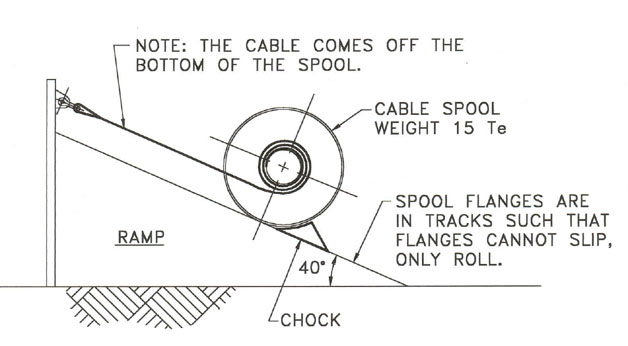
-
Answer:
No, the spool will not roll as shown, because the radius from it's centerline to the outer layer of cable is less than the outside radius of the flanges. Imagine the spool rolling through 90 degrees from its present position. If 90 degree arcs for the cable and flanges are laid out parallel to the ramp, it can be seen that the resulting centerline positions of the spool at the end of each arc are not in the same place along the ramp.
If the spool was full of cable, then the radii would be the same and the spool would start to roll when the chock was removed. As the radius of the cable decreased due to cable being payed out, the spool would come to a stop on the ramp. This is assuming that the safe working load of the cable and the back stop were strong enough to resist the resulting momentum of the spool.
Note that neither the weight of the spool and cable nor the angle of the ramp have anything to do with whether the spool will roll or not.
To prove to your self that the spool will not roll, place a reel of cable, a spool of electrical wire, or a yo-yo on a flat surface and start to slowly unwind it. Note that as the spool is unwinding, the end of the cable/string is slowly following along behind the spool. If someone stands on the end of the cable, the flanges on the spool have to be slipped in order to continue unwinding the cable.
Maximum Reach Enterprises